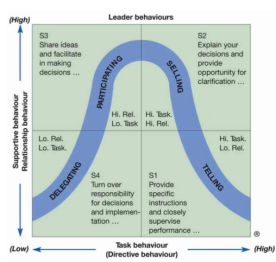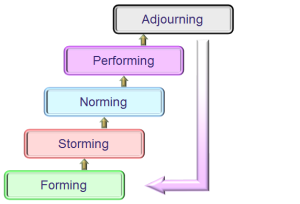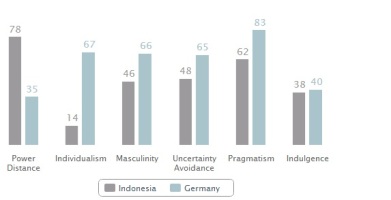Research has consistently shown that diverse teams produce better results, provided they are well led. The ability to bring together people from different backgrounds, disciplines, cultures and generations and leverage all they have to offer, therefore, is a must-have for leaders(Ibarra and Hansen 2011: 71).
Globalization and reliance on teams in organizations has led to a rapid increase in the use of culturally diverse teams in companies. Diverse teams have the ability to think outside the box. They provide companies with a rich base of ideas and talents which ultimately helps to improve performance. It is important for managers to be able to manage diverse teams. This is because managers can improve the organization’s performance by efficiently utilizing the talents and ideas of a diverse pool of employees.
Diverse teams are more beneficial when dealing with tasks that require complex decisions and looking at a problem from different angles (Financial Times 2014). Diverse team members have different perspectives and a wider range of information which might be scarce at their disposal. This enables team members to have a deeper look at the task, explore a wider range of possible solutions and make better decisions.
Diversity gives competitive advantage to the company because it gives companies access to a wide range of skills (Mullins 2013). India Capital, an investment company, uses team diversity as a business strategy. Rather than using only  investment bankers and equity analysts, there are staff with background in computer science, management consulting and even one former clothe trader in Mumbai (Forbes 2012). Dan Tennebaum, an American, is the Managing Director in Mumbai and in his opinion using diverse teams has given the organization competitive advantage. The former clothe trader on his team helped the company to discover opportunities that competitors overlooked in the Indian textile industry (Forbes 2012).
investment bankers and equity analysts, there are staff with background in computer science, management consulting and even one former clothe trader in Mumbai (Forbes 2012). Dan Tennebaum, an American, is the Managing Director in Mumbai and in his opinion using diverse teams has given the organization competitive advantage. The former clothe trader on his team helped the company to discover opportunities that competitors overlooked in the Indian textile industry (Forbes 2012).
However, the increase in interaction as well as the complexities of roles in diverse teams has led to some limitations in using diverse teams(Bret, Behfar and Kern 2006). Communication is a major challenge in diverse teams. For example, research has shown that the greatest challenge faced by virtual team members is the inability to read non verbal cues and this affects communication(Solomon 2010). This can have a negative impact on interpersonal relationship between employees and their overall performance. A manager must therefore create an environment for employees to communicate and collaborate. For example, he can take employees to watch football games. This comic video shows how difference in accents caused misunderstanding in the whitehouse (Al F-M 2007).
A diverse team leader himself must be able to communicate effectively. Frequency of communication, including a manager’s responsiveness to questions and mails is very central to effective communication. For example, the US military was forced to change the way they communicated because subordinates had increased access to sometimes confusing information. To avoid confusion, the leaders were pushed to disseminate information more rapidly and to do follow-up to ensure that information was properly received and understood(Cornel University 2010).
Mintzberg (1990) has argued that to understand the culture of teams in different global horizons, a manager is expected to perform informational, interpersonal and decisional roles. He must ensure that one culture does not dominate decision making especially in multi cultural situations. This will help in avoiding and managing cultural challenges.
Conflict management is a major challenge for managers of diverse teams. Managers should have rules and procedures for conflict resolution (Ministry of Manpower, Singapore Government 2014). The manager must also take control of meetings to ensure that the rules are followed and conflict is avoided. The video shows the different outcomes in meetings where the manager enforces rules to ensure conflict is avoided and a meeting where the manager does not take control (iManage 2011).
Hofstede’s framework (2014) on cultural dimension explores the impact of masculine/feminine culture on managers’ style of conflict resolution. In feminine societies like Indonesia, conflicts are resolved through compromise and negotiations because direct communication is seen as a threatening situation. In masculine societies (e.g. Germany) employees tend to be assertive and decisive and conflicts are resolved through direct communication. Based on this model, It is very important for a manager to understand and apply the appropriate conflict resolution style for different cultural contexts.
 The situational leadership style is of the position that the appropriate leadership style is contingent on the leader’s ability to modify his management behavior to the level of his subordinates’ task or psychologiacl maturity (Hersey and Blanchard 1977). The limitation of this leadership style is that it can divert a leader’s attention from long the organisation’s term strategies. It should therefore be applied with the leader’s focus on the vision and long term strategy of the company.
The situational leadership style is of the position that the appropriate leadership style is contingent on the leader’s ability to modify his management behavior to the level of his subordinates’ task or psychologiacl maturity (Hersey and Blanchard 1977). The limitation of this leadership style is that it can divert a leader’s attention from long the organisation’s term strategies. It should therefore be applied with the leader’s focus on the vision and long term strategy of the company.
As a result of the difficulties in involved in transforming individuals to highly productive team members, Tuckman’s model(1965 cited in Mullins 2013) is a tool that can help managers to build and manage diverse teams. At the Forming stage, the manager gets the team together, introduces them to one another and discusses the team’s objectives. Usually, he has to govern the team. At the Storming stage, ideas of team members compete, sometimes fiercely for consideration. The manager usually guides the team through this tumultuous time. At the Norming stage, rules are formed and the manager’s role is only participative in order to give members decision making ability. At the performing stage, the groups act as a unit and use synergy to perform tasks without the need for the manager’s supervision. Conflict is also properly handled. Finally, at the adjourning stage, the tasks are completed and the team is dissembled.
At the Forming stage, the manager gets the team together, introduces them to one another and discusses the team’s objectives. Usually, he has to govern the team. At the Storming stage, ideas of team members compete, sometimes fiercely for consideration. The manager usually guides the team through this tumultuous time. At the Norming stage, rules are formed and the manager’s role is only participative in order to give members decision making ability. At the performing stage, the groups act as a unit and use synergy to perform tasks without the need for the manager’s supervision. Conflict is also properly handled. Finally, at the adjourning stage, the tasks are completed and the team is dissembled.
In conclusion, from my experience at Coventry University London Campus which has enabled me to work with diverse teams, it is my opinion that the full benefits of working with diverse teams can be truly realized when the leader has the flexibility and courage to use appropriate leadership styles to overcome the challenges posed by the use of diverse teams and give team members a vision and clear direction that will drive them to put their best efforts into team work.
REFERENCES
- Al F-M (2007) Kofi or tea, Hu is and who’s not [online] available from <https://www.youtube.com/watch?v=P069Bo9eYpk&hd=1&noredirect=1#!> [24 June 2014]
- Bret, J., Behfar, K. and Kern, M., C. (2006) ‘Managing Multicultural Teams’, Harvard Business Review, 84(11), pp. 84-91
- Cornel University (2010) Global Teams: Trends, Challenges and Solutions [online] available from < https://est05.esalestrack.com/eSalesTrack/Content/Content.ashx?file=4578f59e-21b3-4a2c-bbfe-63e53af3f5dc.pdf> [14 June 2014]
- Financial Times (2014) Definition of diverse teams [online] available from < http://lexicon.ft.com/term?term=diverse-teams> [14 June 2014]
- Forbes (2012) Want Better Results? Hire a Diverse Team [online] available from <http://www.forbes.com/sites/dorieclark/2012/08/10/want-better-results-hire-a-diverse-team/> [15 Jun 2014]
- Hersey, P. and Blanchard, K. H. (1977) Management of organizational behavior. Utilizing human resources (3rd edition). Englewood Cliffs, N J: Prentice-Hall.
- Hofstede (2014) What about Indonesia [online] available from < http://geert-hofstede.com/indonesia.html> [14 June 2014]
- Ibarra, H, & Hansen, M (2011), ‘Are You a Collaborative Leader?’ Harvard Business Review [online], 89, 7/8, pp. 68-74
- iManage (2011) iManage Group 8 Imperial College London: Managing cross cultural conflict in the workplace [online] available from <https://www.youtube.com/watch?v=uaBwiGEP96E#&hd=1> [24 June 2014]
- Ministry of Manpower, Singapore Government (2014) Creating inclusive and harmonious workplaces [online] available from < http://www.mom.gov.sg/Documents/employment-practices/WDM/Managers_Guide.pdf> [14 June 2014]
- Mintzberg, H. (1990) The Manager’s Job, Folklore and Fact: Harvard Business Review Classic [online] available from <https://www.regonline.com/custImages/250000/250761/3%20Articles%20for%20Pre-reading%20LDP2.pdf> [14 June 2014]
- Solomon, C., (2010), The challenges of working in virtual teams, RW3 CultureWizard [online] available from < http://culcmoodle.coventry.ac.uk/mod/resource/view.php?id=86701> [14 June 2014]
- Tuckman, B., W. (1965) ‘Development Sequence in Small Groups’, Psychological Bulletin, vol 63, pp 384-99 cited in Mullins, L., J. (2013) Management and Organizational Behaviour, Pearson Education Limited, United Kingdom.
- Bantel, K., A. and Jackson, S., E. (1989). ‘Top management and innovations in banking – does the composition of the top team make a difference’. Strategic Management Journal, 10. 107-124



June 18, 2014 at 11:45 am
Good you discussed the advantages and as well the disadvantages of diversity. I think that diversity is very challenging for organisations but has as well lots of benefits. In diverse teams there can be arguments and conflicts due to cultural differences or differences in age, gender, personality, education,… Consequently, I agree that diversity needs close management in order to be successful.
June 19, 2014 at 6:37 pm
Thanks Celine. Great managers have the ability to turn employees from diverse backgrounds into highly productive individuals and team members. As future managers, we must be able to overcome the challenges posed by the use of diverse teams and fully utilize the advantages they have to offer. Bruce Tuckman’s model on team formation is a great tool that can help us to bring employees from different cultural backgrounds together and help them to work and become highly productive as a team.
June 19, 2014 at 1:10 pm
What other tools, techniques,… can be used to improve the productivity of diverse teams? Ex. trainings? Stimulate employees to go out together to have dinner and talk in an informal way?
June 19, 2014 at 6:51 pm
Thank you Celine. Providing trainings, opportunities for socialising and encouraging team work can foster collaboration and improve productivity. I will lay more emphasis on this. Thanks.
June 19, 2014 at 9:57 pm
This was a very honourable segment, outlining and further on going to discuss both limitations and advantages of diversity in work environment.
June 23, 2014 at 8:58 am
Thank you Tofunmi.
June 20, 2014 at 9:46 am
It is really interesting that you stated to utilise the benefits from diverse team, the leaders should be flexible and has courage to use appropriate leadership style. Which leadership style do you think will be best for diverse team?
June 23, 2014 at 8:47 am
Thanks Bulan. In my opinion, there is no single leadership style that can be appropriate in all situations. An effective manager clearly recognise that different styles are needed in different situations (Mullins 2013). Based on this, I tend to support the situational leadership style because it allows a leader to adapt his leadership style to cater for different situations. However, it also has its own limitations and should be applied with the organisation’s vision and strategy in mind.